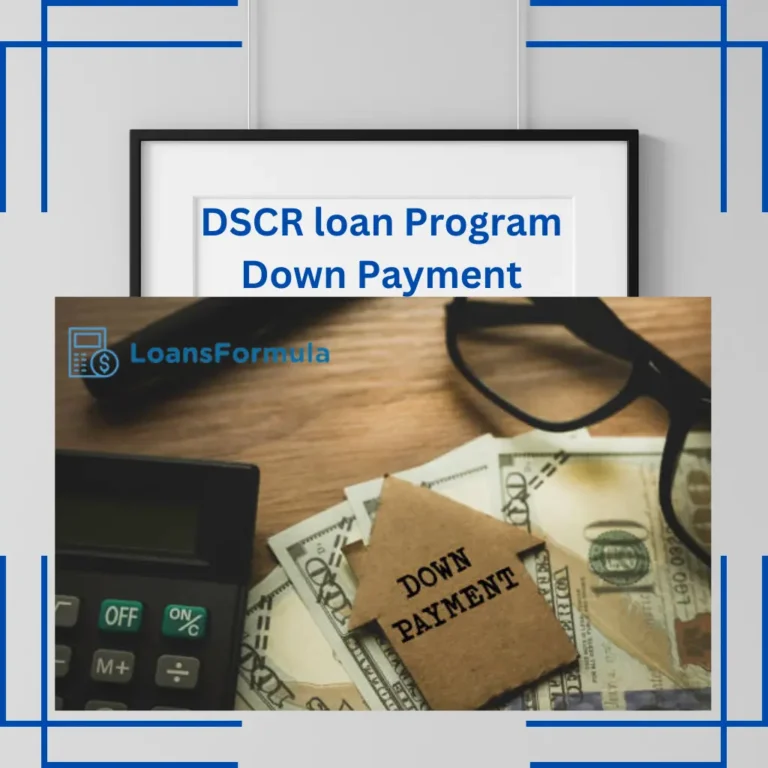DSCR Loans in Texas (2023): Everything You Need to Know
Texas is currently one of the most popular real estate markets for property investors. People from all over the country, as well as foreign investors, are eager to seize opportunities in the Lone Star State. Interestingly, both beginner and experienced investors are now choosing DSCR loans in Texas instead of traditional real estate investment loans for their businesses.
What’s great about DSCR loans in Texas is that it eliminates the need for complicated paperwork like job history, tax returns, or confusing pay stubs. This streamlined loan process allows for faster access to rental income and property cash flow. If you’re in a hurry to purchase an investment property in Texas, a Texas DSCR loan could be the perfect solution for you.
In this guide, we’ll delve into the specifics of Debt Service Coverage Ratio (DSCR) loans and how they can help you achieve your dream of owning real estate. So, keep reading to learn more!
What is DSCR and How Does It Work?
DSCR stands for debt service coverage ratio, an important concept in the lending world. It essentially measures how well a property’s earnings can handle its debt payments. In simpler terms, it determines a borrower’s ability to fulfill their financial obligations on time.
When the DSCR is 1.0, it indicates that the property generates sufficient income to cover its debt payments. However, if the DSCR is greater than 1.0, it means the property generates even more income than necessary to cover its debt payments. This surplus can be utilized for various purposes, such as expanding one’s investments.
On the other hand, a DSCR below 1.0 signifies that the property fails to generate enough income to cover its debt payments.
Lenders find the DSCR indispensable as it assists them in assessing the risk associated with lending money to a particular investor.
A high DSCR suggests that the investor enjoys a solid financial position and is likely to repay their debt punctually. Conversely, a low DSCR implies that your property will struggle to meet its debt obligations.
What makes it different from other loans?
Unlike traditional loans, the DSCR Loan stands apart as a non-QM (Qualified Mortgage) loan. This means that obtaining one doesn’t require navigating through the usual mortgage application process.
With a DSCR loan, you can bypass the need to submit tax returns, pay stubs, employment history, and other personal income documents that are typically required.
This loan option caters specifically to real estate investors who prefer showcasing the positive cash flow generated by their investment property as evidence of their income, instead of relying on documents like tax returns or work history.
To gain a deeper understanding of the DSCR Loan program, we invite you to explore our comprehensive DSCR loan guide.
How to Evaluate a Property for a DSCR Loan in Texas?
When seeking a DSCR loan in Texas, it’s crucial for buyers or businesses to thoroughly assess the property before proceeding. This assessment aims to determine the property’s fair market value and income potential to ensure it justifies the loan amount.
The property plays a vital role in securing the DSCR loan, as the lender can reclaim their losses by foreclosing and selling the property if the borrower defaults.
To evaluate a property in Texas for a DSCR loan, consider the following key attributes: potential rental income, vacancy loss, net operating income (NOI), debt service, DSCR, and loan-to-value ratio.
Follow these steps to appraise a property for a DSCR loan:
- Calculate the potential rental income by multiplying the monthly rent by 12 to obtain the annual rent figure.
- Deduct the vacancy loss from the annual rent by multiplying the vacancy rate (typically around 5%) by the annual rent.
- Subtract any operating expenses, such as property taxes, insurance, and repairs, from the annual rent to determine the net operating income (NOI).
- Calculate the debt service by multiplying the loan amount by the interest rate and adding any monthly principal payments.
- Compute the DSCR (debt service coverage ratio) by dividing the debt service by the property’s NOI.
- Determine the loan-to-value ratio (LTV) by dividing the loan amount by the property’s value. The LTV serves as a measure of the loan’s riskiness, with a higher LTV indicating greater risk for the lender.
Analyzing a property for a DSCR loan is generally quicker than the pre-approval process for a conventional loan, making it an attractive option for real estate investors.
How to Calculate DSCR for Buying Rental Property in Texas?
The Debt Service Coverage Ratio (DSCR) plays a crucial role in determining the viability of purchasing a property. It assesses the property’s ability to generate sufficient income to cover debt payments. By calculating the DSCR loan for buying rental property in Texas, investors can determine if they can meet their mortgage obligations using the property’s income.
To calculate the DSCR, you’ll need the following information:
- Loan amount
- Annual mortgage payment
- Annual Net Operating Income (NOI) (income minus expenses)
Let’s consider a property valued at $100,000 with an annual mortgage payment of $8,000. Assuming the property’s annual NOI is $10,000, the DSCR would be 1.25 (10,000/8,000).
This ratio indicates that the property generates more income than required to cover mortgage payments. In simpler terms, it suggests that the property holds the potential for a profitable investment.
To ensure your eligibility and secure favorable loan terms, it’s essential to shop around and compare different DSCR lenders. Taking the time to find the best lender for your specific needs will greatly benefit your investment endeavor.
What is the Minimum DSCR Required to Qualify for a DSCR Loan in Texas?
When it comes to DSCR loans in Texas, most lenders are seeking investors and buyers with a minimum Debt Service Coverage Ratio (DSCR) of around 1 or higher. This ensures that the borrower has the financial capacity to comfortably meet their monthly payment obligations.
In cases where the DSCR falls below 1.0, there is still a chance for loan approval, but it typically comes with certain conditions. These may include a higher interest rate or a larger down payment requirement from the borrower. Why? Well, the lower DSCR poses a greater risk that the borrower might struggle to make their monthly payments, potentially leading to a loan default.
Therefore, maintaining a DSCR of at least 1.0 is crucial for securing favorable loan terms and minimizing potential financial risks.
How Does DSCR Impact Loan Eligibility?
The Debt Service Coverage Ratio (DSCR) plays a crucial role in determining loan eligibility. Essentially, it measures the borrower’s ability to repay their debts. Let’s explore how DSCR influences loan approval
Net Operating Income (NOI)
The primary factor influencing DSCR is the property’s NOI. A higher NOI translates to a more favorable DSCR, indicating the borrower’s capacity to repay their debts.
Mortgage Terms
The length of the mortgage term effects DSCR as well. A lengthier mortgage term provides borrowers with additional time to repay the loan, resulting in a higher DSCR.
Mortgage Rate
The mortgage rate directly impacts the DSCR. A higher interest rate increases the required debt service, leading to a lower DSCR. Conversely, a lower interest rate improves the DSCR.
Prepayment Penalty
When a mortgage contract includes a prepayment penalty clause, it decreases the DSCR. This provision imposes a fee on the borrower if they refinance or sell the property before the loan term ends.
Loan-to-Value Ratio (LTV)
LTV measures the loan amount relative to the property’s value. A higher LTV indicates a riskier loan for the lender, resulting in a lower DSCR.
Associated Fees
Various fees, such as origination fees, appraisal fees, and closing costs, can affect the DSCR. These fees increase the loan amount, subsequently raising the required debt service and lowering the DSCR.
When seeking DSCR loans in Texas, it is advisable to compare DSCRs offered by different lenders. Additionally, using a DSCR calculator can help estimate your own DSCR, empowering you to find the most suitable loan option for your needs.
How to Obtain a DSCR Loan in Texas: Step-by-Step Guide
If you’re a real estate investor in Texas looking for the perfect financing solution, a DSCR loan could be just what you need. Follow these simple steps to secure a DSCR loan in Texas:
Find the Right Texas DSCR Lender
Start by searching for mortgage lenders in Texas that offer DSCR loans. Take your time to explore different options and find a lender who can provide you with the best terms for your DSCR loan.
Present a Comprehensive Income Potential Analysis
Prepare a detailed analysis of your property’s cash flow to demonstrate that it generates sufficient income to cover your loan payments. Share this analysis with your lender to strengthen your loan application.
Prepare a Down Payment
Most lenders will require a down payment of at least 20% of the property’s purchase price. Make sure you have the necessary funds ready to fulfill this requirement.
Complete the Necessary Paperwork
During the underwriting process, your lender will calculate the Debt Service Coverage Ratio (DSCR), evaluate the associated risks, assess your eligibility, and finalize the loan terms. Additionally, they may request a 1007 Rent Schedule to determine your property’s fair market rent, ensuring it can support your mortgage payments.
Await Approval and Closing
After submitting your application, you’ll typically receive a decision within minutes. Once approved, you can proceed to close the property. In most cases, you can expect to receive the loan funds within 24 hours, providing you with quick access to the capital you need.
The straightforward and streamlined nature of DSCR loans makes them an ideal choice for businesses seeking rapid access to capital. As a small business investor in Texas, a DSCR loan can be the perfect solution to meet your financial needs promptly.
What Are DSCR Loan Interest Rates in Texas?
When it comes to DSCR loans in Texas, the interest rates can vary among lenders. Generally, these rates tend to be 1-2% higher compared to conventional mortgage rates.
If you’re curious about the current interest rates and want a deeper understanding of their dynamics, we have an extensive guide dedicated to exploring DSCR interest rates.
DSCR mortgage rates in Texas are influenced by several factors, including the lender, loan amount, DSCR ratio, and others mentioned above. Before applying for a loan, it’s crucial for borrowers to review the most up-to-date DSCR interest rates. It’s also advisable to shop around and compare rates from different lenders to secure a competitive offer that suits your needs.
Why Choose a DSCR Loan in Texas?
Don’t miss out on the incredible investment potential in Texas real estate. The market has flourished consistently over the past decade, offering a lucrative opportunity for investors. Currently, the median house price in Texas stands at $302,333, reflecting a substantial 14.6% growth within the past year alone.
Texas boasts numerous advantages that make it an ideal investment destination. Notably, the absence of income tax, abundant job prospects, and a high quality of life all contribute to its appeal. Additionally, the state’s rental market is brimming with opportunities, complemented by housing costs that remain below the national average. Prepare to discover your next real estate gem right here in Texas!
How Can DSCR Loans in Texas Grow My Rental Portfolio?
Texas boasts a thriving rental market, making it an ideal place to expand your real estate holdings. As of January 2023, the average monthly rental income in Texas has reached $1,929, marking a $100 increase compared to the previous year.
What’s more, Texas offers a diverse range of rental properties, spanning from $100 gems to nearly $200,000 gems. By incorporating some of these lucrative investment properties into your portfolio, you can easily elevate your real estate game.
This is where DSCR loans come into play, providing a swift solution to bolster your rental ventures. These loans offer you quick access to capital for purchasing rental properties, all at lower interest rates.
Under this program, lenders evaluate both the income potential of the property and your creditworthiness as a borrower to determine your eligibility for the loan. Since your eligibility hinges on the property’s income potential, you have the freedom to acquire multiple properties to your heart’s content.
Therefore, if you’re contemplating real estate investment in Texas, don’t hesitate to seize the opportunity to maximize your portfolio by leveraging the power of DSCR loans in Texas.
Things to Consider When Seeking DSCR Loans in Texas
When embarking on your search for properties and a suitable DSCR loan program in Texas, it’s essential to keep a few key factors in mind. Here are some important considerations:
Favorable cash-out rules
Texas offers lenient cash-out refinance regulations for investment properties. This means you have the opportunity to access cash from your property’s equity.
Diversified job opportunities
Look for areas with diverse employment prospects when investing in Texas. This ensures your tenants have options in case a particular industry faces an economic downturn.
Multi-unit property investments
While Texas already presents lower property prices in relation to rents, acquiring a 2-4 unit property can enhance your cash flow and improve your chances of qualifying for a DSCR loan.
If you’re a Texas resident, starting with properties in familiar neighborhoods might be a prudent choice. However, if you’re an out-of-state investor, feel free to explore different markets within Texas. For comprehensive guidance on the best places to purchase property in the state, consult our complete guide to kick-start your search.
Is it Possible for Foreigners to Obtain a DSCR Loan?
Absolutely! With the rising popularity of DSCR loans not just in Texas, but across the entire United States, foreign investors now have the opportunity to confidently invest in US properties.
By grasping the fundamentals and leveraging this loan option, foreign nationals can tap into the immense potential of real estate, creating a foundation for long-term financial stability and wealth. Through diligent analysis and thorough research, securing a Texas DSCR loan can pave the way for a promising future.
Conclusion
In summary, DSCR loans present numerous advantages compared to traditional loans, making them an excellent option for both Texas business owners and real estate investors. If you’re currently seeking financing for your next project, it’s crucial to consider a Texas DSCR loan.
To ensure a smooth process, it’s vital to engage with an experienced lender specializing in financing. You can refer to our comprehensive guide on finding the most suitable lender, which provides valuable insights and assistance in your search.
Remember, exploring the benefits of DSCR loans and partnering with a knowledgeable lender will pave the way for successful project financing in Texas.







